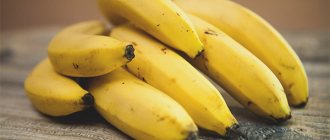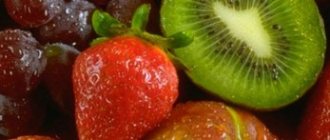Many people love this bright, fragrant exotic fruit. And the question about the benefits and harms of bananas is by no means idle. There is always a desire to eat this or that product, not only because of its taste and wonderful appearance or smell. I really want my favorite fruit to also be healthy.
Now you will find out what bananas are and, most importantly, who can and even should eat them, and who should abstain.
It is believed that the birthplace of the banana is the islands of the Malay Archipelago. In this region they say that bananas have been known for so long that they even outstripped sugar cane and rice. Imagine that the first mention of this exotic fruit is the ancient Hindu religious text Rig Veda, which belongs to the sacred Vedas and dates back to the 11th-17th centuries BC. Bananas were grown and enjoyed with pleasure back in Ancient Egypt. Thus, in Thebes, detailed written recommendations remained on the cultivation of this healthy and tasty food product. Bananas are known all over the world and are in great demand. There are many stories and legends about him. For example, most people think that a banana grows on a certain banana tree. Although in reality, it grows in a giant banana plant, and its fruits are not considered fruits or vegetables, but berries. Along with bamboo, banana is the tallest herbaceous plant in the world. Some of them reach a height of more than 9-10 meters, and therefore are mistaken for trees.
Not everyone knows that in addition to the usual yellow bananas, there are also red, black, and gold ones, which grow exclusively on the largest island of the Seychelles archipelago - Mahe. There they are traditionally served as a side dish for various seafood, most often squid and shrimp.
Read also Oranges - beneficial properties, contraindications
In total, more than 40 species and over 500 varieties of bananas are known, varying not only in color, nutritional properties and chemical composition, but also in shape and size: from small straight to almost round, resembling a melon. Bananas are cut while still green. During transportation, they ripen and acquire their wonderful taste, color, aroma and beneficial properties.
As already mentioned, bananas have been known to mankind since time immemorial and were brought to Europe in small quantities even before our era (for example, by Alexander the Great in 327 BC after his campaign in India). However, significant supplies of this exotic fruit became possible only from the second half of the 19th century, when the first refrigeration units appeared. Since then, this amazing fruit, or to be more precise, a berry, has spread to all continents and has become very popular due to its taste and nutritional qualities.
The benefits and harms of bananas
Banana is very useful for the body, as it contains a huge number of useful substances and elements. It contains the necessary vitamins: provitamin A, C, B6, B2, B1, PP, K. Of the chemical elements, there are potassium, sodium, magnesium, phosphorus, iron, sulfur, manganese, copper. It contains starch, sugars, pectins, organic acids, fiber, tannins, aromatic substances, nitrogenous substances, enzymes, catecholamines. Bananas contain the protein tryptophan, which is transformed into the “happy hormone” serotonin. Therefore, bananas are used to treat depression, irritability, and bad mood. The high potassium content has a positive effect on the condition of the heart and blood vessels, helps remove fluid from the body during edema, participates in salt metabolism, and strengthens muscles. If you have frequent muscle cramps in the legs, it is recommended to use bananas more often as food, since this reaction of the body reveals a lack of potassium. There is 376 mg of potassium in a banana, and there is very little sodium and nitrogenous substances in it. This makes banana indispensable for kidney disease, renal failure and in the presence of an artificial kidney. Bananas are well absorbed and digested. Enrich the body with useful substances and energy. It is recommended for postoperative patients for speedy recovery. Its enveloping and analgesic properties, useful for the gastrointestinal tract, are known. It is used to feed patients with burns, after oncological operations, including radiation therapy and chemotherapy. Due to the high amount of sugar, bananas are often used by athletes, as sugar is quickly converted into energy since the calorie content of a banana is relatively high.
The question arises: how many calories are in a banana? Depending on the variety and the degree of its maturity, we can conclude that it will range from 86 to 100 kcal per hundred grams of product.
The calorie content of 1 banana also depends on its size and weight. Bananas are used as a product for diets (banana diet) and for fasting days. Bananas help increase efficiency, concentration, and reduce body fatigue. Those who want to gain weight or increase their muscle mass are recommended to eat bananas daily. Patients with hypertension and atherosclerosis are recommended to arrange fasting banana days. They are useful for diseases of the liver and kidneys: diapedetic bleeding, nephritis, urolithiasis. Bananas are used to treat stomatitis. The laxative property of bananas is used to treat gastrointestinal diseases. They are also prescribed for diarrhea, colitis, and enteritis. To treat childhood gastrointestinal diseases, crushed banana pulp is used. Banana is useful for treating heartburn and constipation. Bananas do not cause allergic reactions, so they are recommended even for infants as a first food. Bananas are used to treat celiac disease in children (that is, an allergy to gluten contained in cereals). But before treatment, consultation with a doctor is necessary. Banana stem juice is used as it has sedative properties. It is used as an anticonvulsant and sedative. Used to treat epilepsy and hysteria. This is a scientific fact. Banana peel also has medicinal properties. It is used to treat migraines (applying a compress to the forehead and the back of the head), hypertension (using a decoction of the green peel), burns and rashes (applying the inner part to the wounds), plantar warts (tying the peel to the wart, changing it to a new one every day).
Bananas are not a diet food
Bananas contain many beneficial nutrients, but they are not a dietary food. Bananas are higher in calories than other fruits. One hundred grams of product contains about one hundred and five calories. If you're watching your calorie intake, it's best to skip bananas. You can replace them with more dietary foods, for example, an apple or a pear.

In addition, bananas do not contain much fiber. That is why after a person eats a fruit, he will feel a feeling of heaviness and a full stomach for a long time.
The baby saw the kids for the first time and reacted funny to their bleating: video
A simple dessert recipe made from choux pastry. Sweeps off plates in minutes
Water, pajamas and a routine helped me learn to wake up early in just a week
Medicinal properties of banana
Eating a banana for liver disease, kidney disease, atherosclerosis, hypertension, swelling of the extremities, and constipation gives a positive result due to the presence of iron, zinc and potassium. Banana fruit has antiseptic and astringent properties necessary for inflammation of the mucous membrane of the stomach and mouth, enteritis, and exacerbation of stomach and intestinal ulcers. with diabetes and high acidity, you can only eat unripe or boiled fruits, since ripe ones contain sucrose, fructose and lactose. For women on “critical days,” bananas will help restore vitamin B, which is necessary for hair growth and smooth facial skin. the presence of carotene helps to cope with heart and vascular diseases. It is enough to eat 1-2 bananas a day and muscle pain, irritability, and the need for hypertensive patients to take pills disappear. Old people and children can eat bananas often; they rarely cause allergies. athletes can eat after training to restore strength. Vitamins E and C contained in banana fruits have a positive effect on the liver, genitals and reproductive function. they slow down skin aging, wounds heal quickly, and the functioning of the nervous system is restored. Bananas lower blood pressure, clear vocal cords during sore throat, and lower body temperature. People suffering from heartburn, as well as those undergoing chemotherapy in oncology clinics, benefit from bananas. The pulp of the fruit is used for moisturizing and softening face masks (smoothes wrinkles, eliminates inflammation). for the mask you will need: 1 banana pulp, 2 tbsp cream, 1 tsp honey; Stir the mixture, apply on your face for 10-15 minutes, and rinse with water. for dry hair after perm, a mask of 1 banana, 1 tsp/l wheat germ oil, 1 tbsp/l honey is suitable. Mix the entire composition in a blender, spread on hair and rinse after 20 minutes. A banana diet, without eating buns and pasta, brings a noticeable effect for weight loss. Banana peel will relieve irritation and swelling from mosquito bites if you rub the inside of it on the sore spot. Bananas are good for hangovers with a milkshake and honey. it will calm the stomach, increase sugar levels and cleanse the body.
Why are they useful - 10 facts
Below we'll look at 10 key evidence-based health benefits of bananas, and then talk about the likely harms for some groups of people.
Contains valuable nutrients
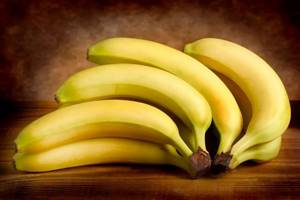
Bananas are rich in carbohydrates, fiber, and many vitamins. One medium banana (118 grams) contains 105 calories and is rich in the following nutrients:
| Item name | Percentage of recommended daily requirement/weight |
| Potassium | 9% |
| Vitamin B6 | 33% |
| Vitamin C | 11% |
| Magnesium | 8% |
| Copper | 10% |
| Manganese | 14% |
| Carbohydrates | 24 grams |
| Cellulose | 3.1 grams |
| Squirrels | 1.3 grams |
| Fats | 0.4 grams |
According to Japanese experts, bananas are also rich in antioxidants, the most powerful of which is dopamine. 100 grams of banana pulp contains from 2.5 to 10 mg of dopamine.
Carbohydrates are represented primarily by resistant starch, which, as bananas ripen, is converted into simpler sugars: glucose, sucrose and fructose.
Reduce blood sugar levels
Bananas contain high amounts of pectin and resistant starch, which can lower blood sugar levels after eating any food.
American experts have proven that consuming just 3 grams of banana fiber lowers blood sugar levels and slows down the rate of gastric emptying, causing a prolonged feeling of fullness.
Bananas also have a fairly low glycemic index (green bananas - 30, ripe ones - 60, average value - 51), which allows them to be included in the diet of patients with diabetes. The fruit cannot cause a sharp rise in blood glucose levels.
It has been found that just 15-30 grams of resistant starch increases the sensitivity of peripheral tissues (muscle and fat) to insulin by 33-50% (the effect is more pronounced in men than in women). This property ensures rapid consumption of glucose by cells.
Scientists recommend including bananas in the diet not only for people suffering from various glycemic pathologies, but also for those with metabolic syndrome (hypertension, obesity, gout).
Improves gut health
Banana is a valuable source of dietary fiber (resistant starch and pectin).
Resistant starch is able to restore adequate intestinal microflora, improve the course of any infectious and inflammatory diseases, and increase the effect of digestive enzymes.
It can also inhibit chronic inflammation in the intestinal wall, which is currently considered one of the causes of aging.
Studies demonstrate that resistant starch, being a prebiotic, increases the number of lactobacilli and bifidobacteria, inhibits the growth and reproduction of various pathogenic representatives of the intestinal microbiocenosis.
During the interaction of bacteria with this type of starch, many biologically active substances are released, the main of which is butyrate. It normalizes metabolism at the level of epithelial cells of the mucous membrane of the large intestine, improves trophism and delivery of nutrients. Another important medicinal property of butyrate is the prevention of colorectal cancer.
Pectin, according to recent scientific research, also has antitumor activity. Experts from the UK have proven that it can prevent colon cancer.
Helps in losing weight
At the moment, there are no studies that directly study the effect of bananas on body weight, however, they have beneficial properties that can indirectly help with weight loss:
- Low energy value. The fruit is low in calories - about 105 calories per 1 medium-sized banana. Therefore, they can be consumed safely.
- Feeling of fullness of the body. Bananas cause a rapid development of a feeling of fullness due to the large volumes of fiber they contain and slow down the evacuation of stomach contents. This data is provided by scientists from the USA.
- Improving food absorption. Bananas normalize the functioning of digestive enzymes and gastrointestinal motility, which increases the bioavailability of nutrients and speeds up metabolism.
American experts have proven that regularly adding fiber to your diet leads to a loss of 2 kg of weight in 12 weeks. Brazilian scientists demonstrate similar results. They note a decrease in body weight of 1.22 kg over 3 months.
Improves heart and vascular health
An important advantage of bananas is their high potassium content. One fruit provides up to 9% of the recommended daily requirement.
This microelement allows you to reduce high blood pressure and reduce the risk of developing cardiovascular complications (myocardial infarction, stroke, etc.) by 27%.
Bananas are also rich in magnesium, which is necessary for the coordinated functioning of cardiomyocytes, from which the heart muscle is built.
Protect the brain
Any fruits and vegetables are valuable sources of natural antioxidants. Bananas are no exception. According to scientists, they contain a colossal amount of catechins and dopamine.
These substances prevent degenerative pathologies of the brain.
Dopamine from bananas does not penetrate the brain through the blood-brain barrier and does not affect hormonal status and emotional background.
Improve kidney health
Numerous studies show that eating bananas has a positive effect on the functional and physical health of the kidneys.
Experts from Sweden found that eating bananas 2-3 times a week reduces the likelihood of diseases of the excretory organs by 33%.
American scientists have obtained similar data: eating fruit 4-6 times a week can reduce the risk of kidney pathologies by 2 times.
The effect is believed to be due to the high potassium content and the prevention of diabetes. As a result, the structure of the epithelium of the glomeruli of the kidneys is not disturbed, and atrophic and degenerative abnormalities do not occur in them.
Bananas are a powerful way to prevent the development of chronic kidney disease or reduce the progression of this disorder.
Useful for athletes
Bananas are often called the ideal food for athletes. This is due to the high content of proteins and vitamins.
According to scientists, a special mineral and vitamin composition prevents the development of muscle spasms and muscle soreness after training.
Contraindications for eating banana
Bananas are digested slowly, and therefore can cause the formation of gases and bloating in the intestines, preventing the outflow of bile. This means that if you have such problems, you should not eat a lot of bananas on an empty stomach and wash it down with water. It is contraindicated to eat bananas if you have high acidity, or if you are prone to varicose veins and thrombophlebitis, as bananas thicken the blood. For the same reason, it is not recommended to indulge in bananas after heart attacks and strokes. Ripe bananas should not be eaten if you have diabetes, as they contain a high sugar content. And so, banana fruits are not recommended: - for patients with varicose veins, as they increase blood viscosity, which leads to the appearance of blood clots; - diabetics and people with excess body weight, since sugar causes bloating and flatulence; - patients who have had a stroke or heart attack, - people with high acidity of gastric juice;
What other problems can bananas cause?

Bananas can cause an allergic reaction. Because they contain a large amount of tyramine. The composition also includes proteins similar to natural latex. If you are sensitive to latex, you will most likely have to avoid eating fruit.
In addition, bananas contain a lot of potassium. This means that excessive consumption can lead to hyperkalemia.
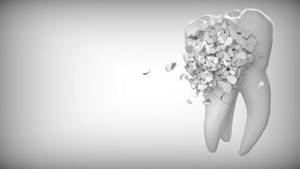
A large amount of sugar contained in bananas can cause caries and other dental diseases. To prevent unpleasant consequences from eating bananas, you need to thoroughly brush your teeth immediately after eating.
For hypertension, banana kvass

“Rinse the bananas under running water and peel them. 3 cups of peel, cut into small pieces (4 bananas were enough for me, but it all depends on their size), pour into a 3-liter jar and pour warm boiled water, after dissolving a glass of sugar in it.
Separately mix 1 tbsp. spoon of 15% sour cream with 50 ml of water and also pour into the jar. Cover the neck with several layers of gauze and leave for 2 weeks. If foam appears in the first days, it must be removed.
Then pour 1/3 of the contents of the jar into a separate container, and in return add water up to the neck and 1/3 cup of sugar. 1 liter of kvass, which has been poured, take 100 ml 30 minutes before meals. And do this until all the kvass is gone. Try it, it’s both tasty and effective.”
Indeed, in order to prevent the development of hypertensive syndrome, it is necessary to obtain a sufficient amount of potassium with food. Ripe banana pulp contains it in abundance. Calcium is also involved in reducing blood pressure, preventing the development of hypertensive crisis and stroke. Phosphorus improves the elasticity of blood vessels, thereby increasing their tone, and magnesium relaxes blood vessels, preventing the development of spasms.
In addition, the vitamin-antioxidant complex of banana is involved in blood thinning and enriches it with oxygen. So bananas are not only possible, but simply necessary to be consumed for high blood pressure and other diseases of the cardiovascular system.
Answers to frequently asked questions
Below are the answers to the most controversial questions regarding eating bananas:
- Which types are the most useful? The healthiest ones are medium-sized, ripe yellow bananas; they contain the highest content of valuable vitamins and minerals. Fresh green bananas are not suitable for consumption; you should wait until they are ripe. Overripe bananas also lose their beneficial qualities. There is no difference between small and large fruits.
- Are dried fruits healthy? Yes! During drying, bananas are not exposed to high temperatures and chemicals. The content of nutritional components in dried bananas is even slightly higher than in the original product.
- Is it possible to eat them on an empty stomach in the morning? Eating bananas on an empty stomach after waking up can disrupt the natural potassium-magnesium balance and cause the development of feelings of fatigue or drowsiness. The fruit can be consumed after a standard breakfast or during it, be sure to combine it with other products.
- Can I eat them at night before bed? Bananas slow down gastric motility and place increased stress on the digestive system. It is recommended to eat bananas no later than 2-3 hours before bedtime.
- Can I use them every day? Yes! Bananas have a large amount of valuable fiber and nutrients that are not capable of causing significant disturbances in the body.
November 25, 2020, 20:22 0 27,010
Failure in the body as a result of eating junk food, experiencing stressful situations and abuse of bad habits leads to disturbances in the functioning of the gastrointestinal tract. A person is at risk of ulcerative lesions of the organ, gastritis, pneumatoses, Achilles and other stomach ailments. As treatment, the patient is prescribed medications and a strict diet. One of the permitted foods is banana, which contains vitamins necessary for the human body.
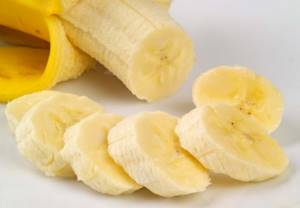
Symptoms
A few hours after eating fruit, patients begin to complain:
- for the appearance of abdominal discomfort (pain, bloating, heaviness);
- for nausea, banana burps, hiccups, heartburn;
- for attacks of weakness, trembling in the limbs, sweating.
Objectively detected: rumbling, increased abdominal volume, vomiting, diarrhea. In mild cases, there is nausea and moderate pain in the epigastrium and intestines, while maintaining a normal general condition.
With an average, moderate-severe course, patients weaken, their body temperature rises (37.5-38.5 degrees), attacks of vomiting and diarrhea intensify, the pulse quickens, blood pressure decreases, and shortness of breath may appear.
In children under one year of age, a severe course occurs, associated with severe dehydration of the body, which is manifested by severe disturbances in cardiovascular, respiratory and nervous activity.
If intestinal infections caused by eating low-quality bananas can be determined using special studies, poisoning with phosphates and nitrates is difficult to detect using diagnostic methods. Clinically, in these disorders, in addition to eating dysfunctions, changes can be observed at the level of nervous activity. Excess phosphates cause insomnia and overexcitement in children, while nitrates, on the contrary, cause severe fatigue and constant drowsiness.
